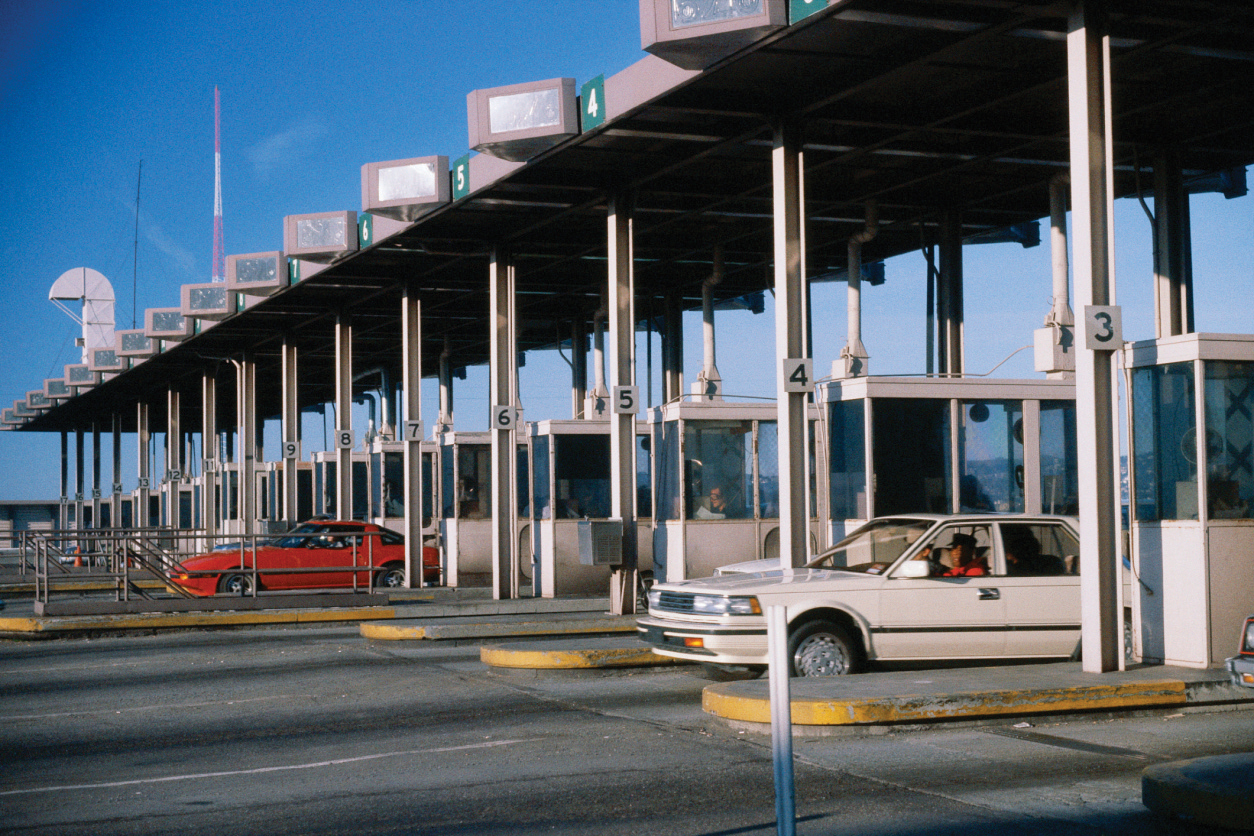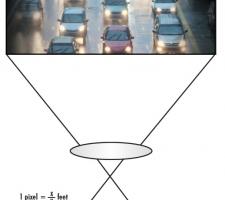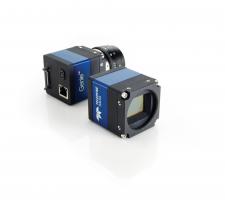
Success relies on correct camera selection for the specific application such as toll enforcement
Machine vision systems offer great variety of function and performance.
There are many ways in which machine vision systems can enhance safety and security in transportation, but the ultimate results will only be as good as the image produced. Success relies on correct selection of the camera of such systems, as the features and performance required vary considerably by application.
These automated 'eyes on the scene' can monitor events 24/7 unaffected by fatigue or boredom, missing nothing.
Vision systems can measure highway traffic and automate flow control, detecting and responding to accidents as well as congestion. They can pick out and recognise license plates and other vehicle markings for law enforcement, automated billing of highway tolls, or controlling access to secure and restricted areas.
They can automate the length measurement of trucks at highway weigh stations or scan undercarriages looking for contraband or explosives.
These diverse applications vary in terms of field of view to be monitored, lighting available, image detail required and speed of image capture needed.
Camera and lens vendors thus offer a wide variety of options for meeting the various requirements. These choices can be overwhelming when first considering a transportation vision system. Yet, if the camera selected is not properly matched to the application, the technology will be overpriced at best and at worst, ineffective due to high error rates. Careful evaluation of camera options is a necessity for ensuring vision system effectiveness.
In beginning this evaluation it can be helpful to understand the digital camera's fundamental structure. There are essentially three major elements. At the heart of the digital camera is the image sensor. This device is the key determinant of image quality and capture speed as well as a major factor in establishing a camera's cost. The lens is the second major element, determining field of view as well as the camera's ability to capture sufficient light to form a useful image.
Thirdly, body electronics determine what features a camera offers besides simple image capture.
Transportation agencies and developers can ensure they have the right camera for the job by considering what they need from these three main elements, evaluated against the following 10 key criteria:
Image sensor
1. Color versus monochrome: Some transportation applications need color images to meet legal criteria for proof of vehicle identification. For many applications, however, monochrome (black and white) images are sufficient for the task and have the advantage of being less expensive for a given resolution.Working in monochrome also simplifies image processing and so can lower computing requirements and overall system cost. It is possible to create a monochrome version of a color image before processing to achieve the same simplification, but that task in itself can be processor intensive and will negate the cost benefit. Some color cameras feature body electronics that can internally extract a monochrome image for processing while creating a color image for legal purposes, meeting both needs simultaneously.
2. Area or line scan: An area scan image sensor forms a two dimensional image at one time, making it the best choice for applications that need a snapshot type of image. The area scan is weak, however, when needing very large fields of view at high resolution, for accurate measurement of the length of trucks at weigh stations, for example. Line scan sensors form images one line at a time and depend on movement of the sensor or the target object to build a complete image. Resolution is better, as is field of view, depending on the design and image size in the direction of movement is essentially unlimited. Images of all different sized vehicles can be produced with equal results. Line scan sensors are unsuitable for strobe or flash lit imaging, however, and need movement rate information to avoid distortion when assembling the image line by line.
3. Resolution: Pixel count alone is not an adequate guide to finding a camera that will provide the degree of detail desired for a given application. The lens works in conjunction with the sensor to establish image quality and the two should match in terms of image size and the ability to resolve fine detail. The physical dimensions that the field of view represents should also be factored in (see figure 1). For instance, the number of pixels needed to cover the width of a traffic lane might range from 640 to 1200 depending on customer preference and software requirements. In general, the higher the resolution and size of sensor required, the greater the costs.
4. Infrared capability: Ability to capture an image in infrared (IR) or near infrared (NIR) rather than white light can be an advantage when the use of visible lighting creates a safety or security issue. To be certain a sensor will work with NIR, check its sensitivity at the 850nm wavelength typical of NIR LED illumination. Make certain as well, that the lens will pass NIR light and focus it properly. A camera designed to work with NIR at night will also need an IR filter to avoid being overwhelmed by the Sun's IR during daylight hours.
Body electronics
5. Auto brightness control: The human eye, with its many adjustment mechanisms, can operate in conditions from full daylight to starlight. To even come close to that illumination range a digital camera needs both variable gain and exposure settings in the sensor and may also need an adjustable iris in the lens. An IR camera may also need to move a filter in and out of the light path to handle both daylight and artificial illumination. The camera's body electronics should provide controls for these features.6. In-camera processing and memory: A camera with built in memory and processing capabilities can greatly reduce the demand on downstream image processing; lowering computing and other system costs. Built in motion detection, for instance, allows a camera to capture an event through self triggering rather than via an external sensor. Built-in image memory can allow a camera to provide the system with an image from before the triggering event. If the built-in processing is 'user configurable', the camera can be adjusted to serve a unique purpose at a stock price.
7. Meta data: Transportation vision systems often need to record more than just the image, such as time stamping and camera identification. This additional information is meta data that can come automatically from the camera itself rather than being appended to an image elsewhere in the vision system, possibly in error. Meta data can also include exposure parameters to help simplify extraction of additional image detail post-processing.
8. Connectivity: The camera's external interfaces determine attributes such as image transfer speeds, cable costs and the maximum distance the camera can be separated from the host system. Interfaces also determine what camera controls the host has available. Gigabit Ethernet is becoming a popular interface for many cameras because it uses a simple low cost cable, its performance supports high resolution and frame rates, and it can provide power, control and data over the same cable.
System integration
9. Additional ports: If the camera's body electronics offer input/output ports in addition to the host system interface, they can reduce the number and cost of system parts, as well as lessen opportunity for failures to occur. A serial port, for example, could be used to control the tilt and pan motors of a camera mount, trigger strobe lighting, change filters or adjust the iris on a lens. Or, a serial port can handle other external but camera related functions using the camera's control interface, eliminating the need for additional cabling between host and camera site. An input port would provide a simple way to connect triggers or multi camera synchronization signals to the camera.10. Camera family availability: Given the diversity of requirements in transportation vision systems, choosing cameras that are part of a product family may help lower long term system costs. Camera families provide users with a range of sensor choices for meeting different application needs, yet retain a common housing and body electronics feature set. This commonality helps simplify development and maintenance of vision systems for multiple applications, by eliminating the need for different programming interfaces, mounting hardware and multiple providers. By considering this and the previous nine factors, developers can narrow the range of camera choices for their transportation vision system and find the best match for the particular application.














